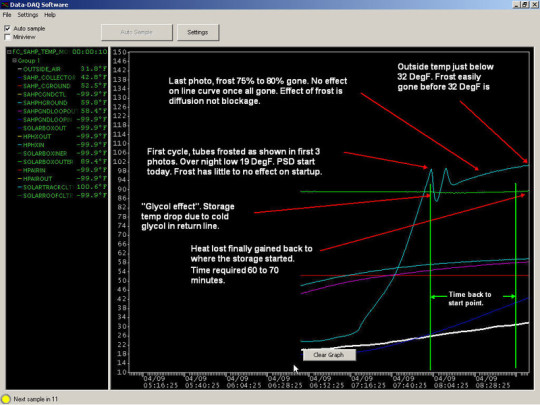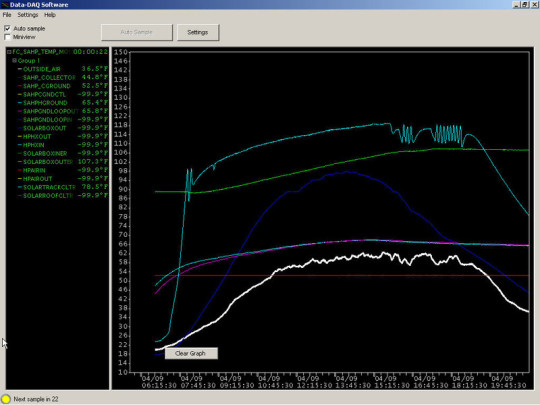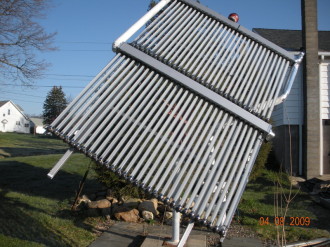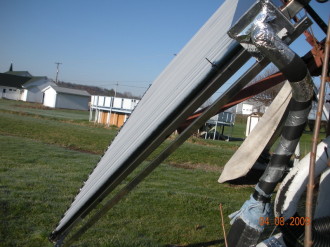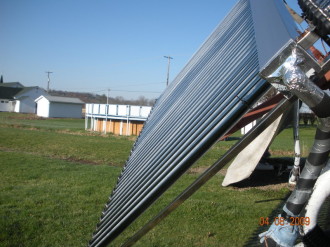Understanding Evacuated Tube
Solar Myth's
#1. Evacs hold frost longer so the systems will not turn on and therefore collect less heat.
The following graph shows collector temp (cyan), storage temp (green), outside temp (white) on April 9th, 2009 starting at sunrise on what will be a PSD until about 1:00 PM in the afternoon. The low was about 19 DegF at sunrise. The first three photos after the two graphs show the state of the frost right at the first turn on cycle. Note the collector temp had no trouble rising under heavy frost. The frost at sunrise was of course heavier than in the photos which come later at the first cycle. The last photo shows the collector when the frost is almost gone. Notice the shape of the collector temp curve (cyan). The curve is even and shows no "quick jump" once the frost is almost gone. It also has no trouble gaining temp and turning on early. The times on the graph are DST, so the collector actually had its first cycle just before 7:00 AM EDT. The simple answer to this is that the frost really functions as a light diffuser rather than a light absorber. Since the evacs don't loose their heat, the "frost" on the tubes does not "cool off" the tubes. In short, the frost has little effect on net energy gain. The second graph shows the time scale compressed so you can see how the whole day "panned" out.

